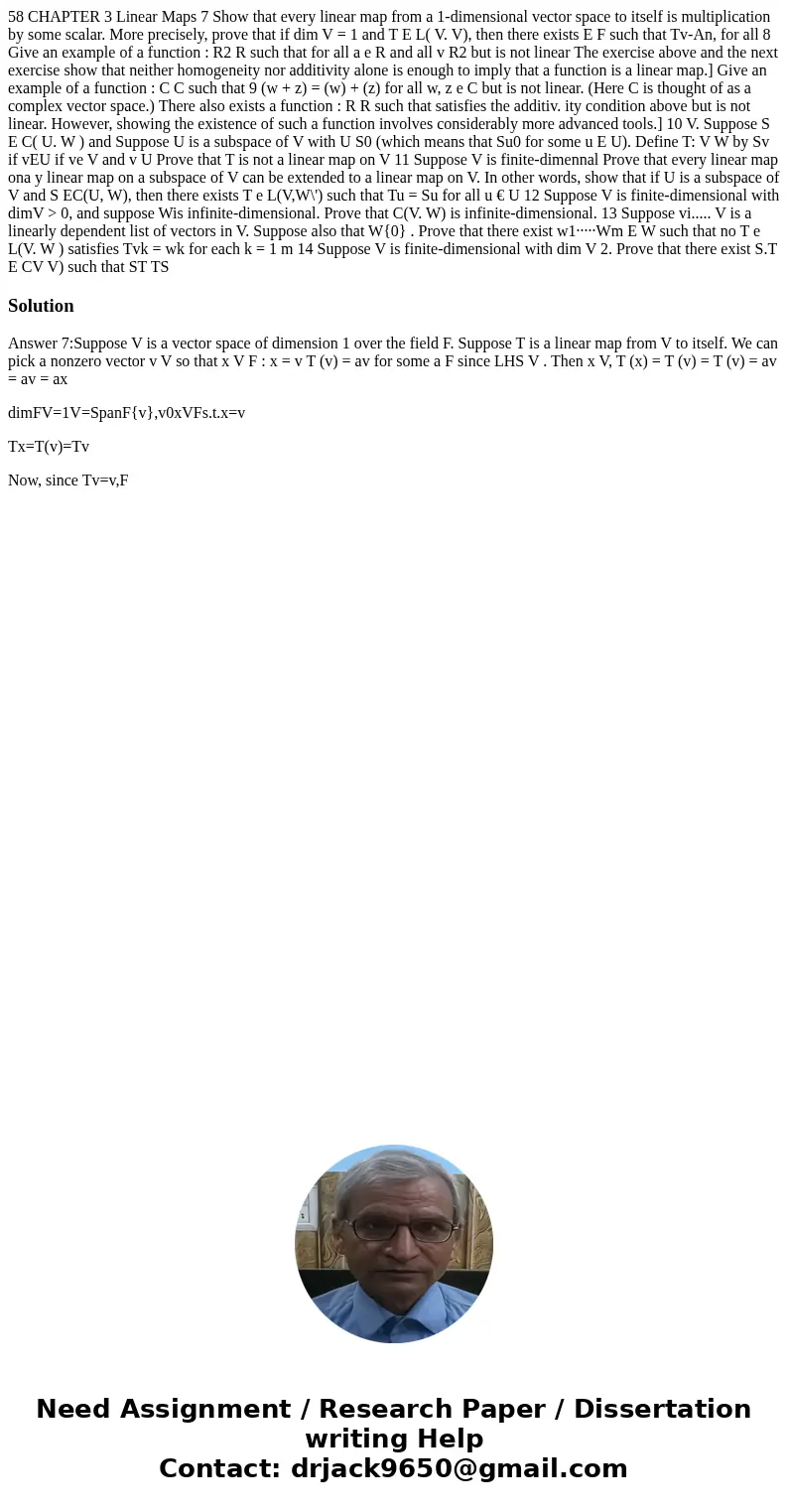58 CHAPTER 3 Linear Maps 7 Show that every linear map from a
58 CHAPTER 3 Linear Maps 7 Show that every linear map from a 1-dimensional vector space to itself is multiplication by some scalar. More precisely, prove that if dim V = 1 and T E L( V. V), then there exists E F such that Tv-An, for all 8 Give an example of a function : R2 R such that for all a e R and all v R2 but is not linear The exercise above and the next exercise show that neither homogeneity nor additivity alone is enough to imply that a function is a linear map.] Give an example of a function : C C such that 9 (w + z) = (w) + (z) for all w, z e C but is not linear. (Here C is thought of as a complex vector space.) There also exists a function : R R such that satisfies the additiv. ity condition above but is not linear. However, showing the existence of such a function involves considerably more advanced tools.] 10 V. Suppose S E C( U. W ) and Suppose U is a subspace of V with U S0 (which means that Su0 for some u E U). Define T: V W by Sv if vEU if ve V and v U Prove that T is not a linear map on V 11 Suppose V is finite-dimennal Prove that every linear map ona y linear map on a subspace of V can be extended to a linear map on V. In other words, show that if U is a subspace of V and S EC(U, W), then there exists T e L(V,W\') such that Tu = Su for all u € U 12 Suppose V is finite-dimensional with dimV > 0, and suppose Wis infinite-dimensional. Prove that C(V. W) is infinite-dimensional. 13 Suppose vi..... V is a linearly dependent list of vectors in V. Suppose also that W{0} . Prove that there exist w1·····Wm E W such that no T e L(V. W ) satisfies Tvk = wk for each k = 1 m 14 Suppose V is finite-dimensional with dim V 2. Prove that there exist S.T E CV V) such that ST TS 
Solution
Answer 7:Suppose V is a vector space of dimension 1 over the field F. Suppose T is a linear map from V to itself. We can pick a nonzero vector v V so that x V F : x = v T (v) = av for some a F since LHS V . Then x V, T (x) = T (v) = T (v) = av = av = ax
dimFV=1V=SpanF{v},v0xVFs.t.x=v
Tx=T(v)=Tv
Now, since Tv=v,F

 Homework Sourse
Homework Sourse